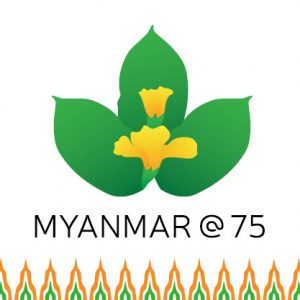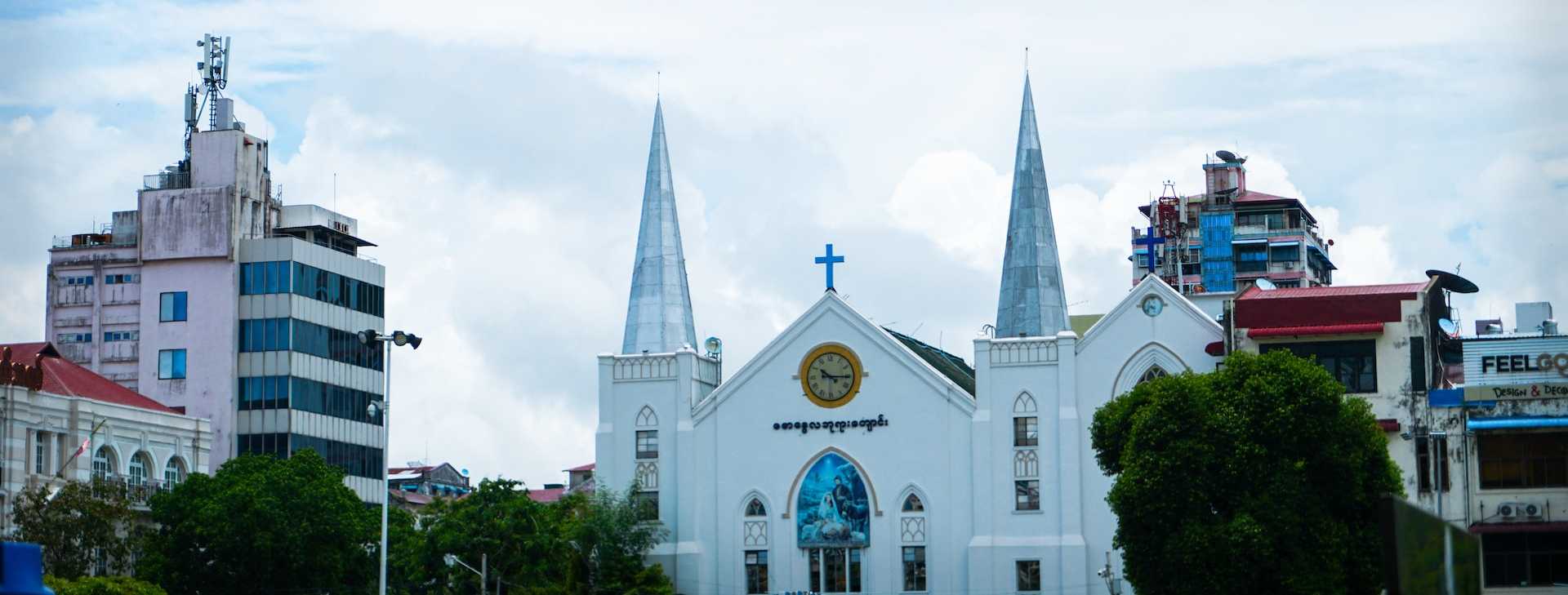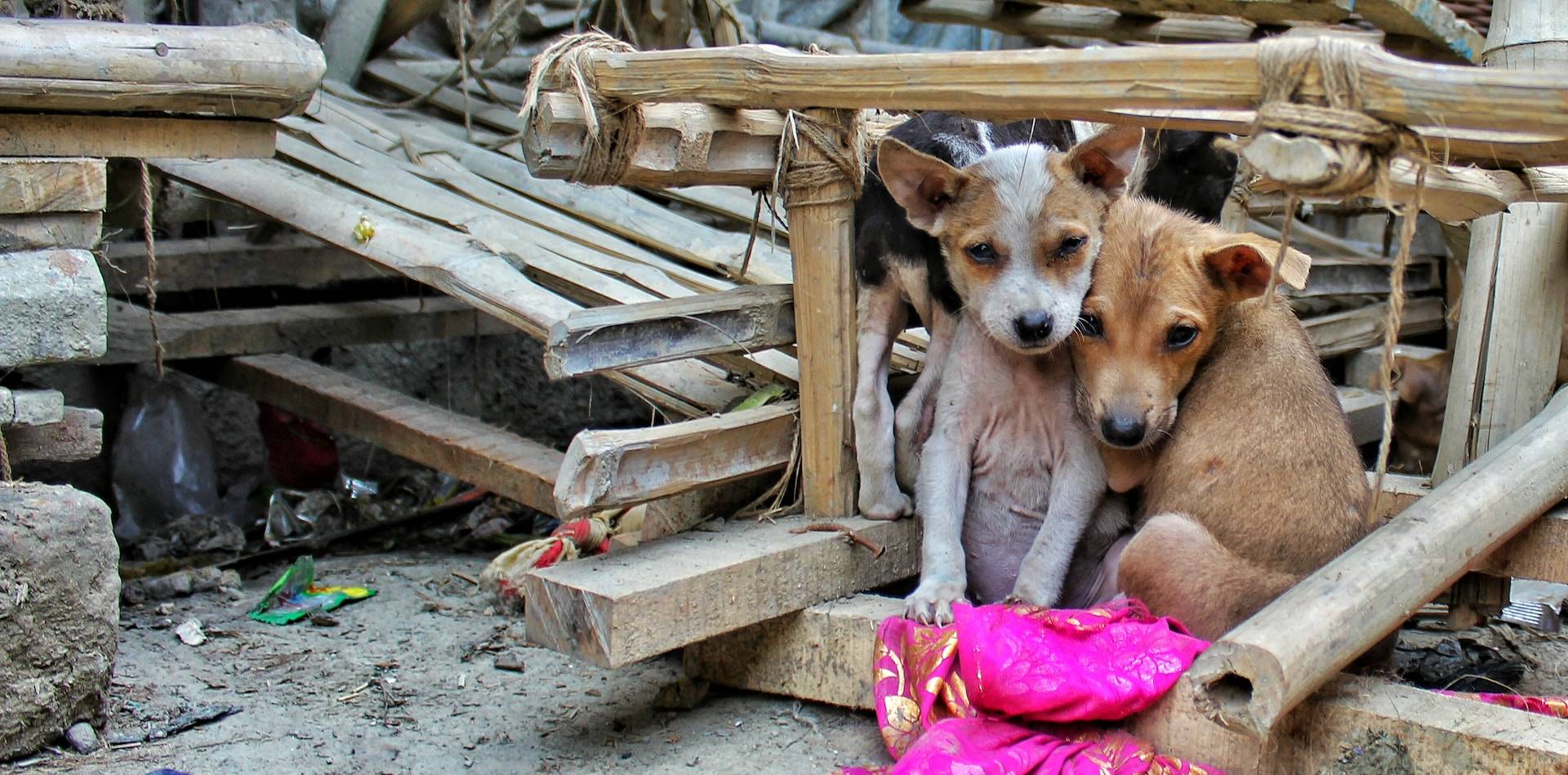 As a variety of armed organisations and militia control more and more territory in the civil war in Myanmar, Htet Min Lwin and Matthew J. Walton pose a moot question: is the commonly-understood, western concept of ‘nation-state’ applicable to a future Myanmar? Are there lessons for other conceptual ideas in her past, and can we imagine a more inclusive and robust future Myanmar in other ways?
As a variety of armed organisations and militia control more and more territory in the civil war in Myanmar, Htet Min Lwin and Matthew J. Walton pose a moot question: is the commonly-understood, western concept of ‘nation-state’ applicable to a future Myanmar? Are there lessons for other conceptual ideas in her past, and can we imagine a more inclusive and robust future Myanmar in other ways?
January 4 was the 75th anniversary of Myanmar’s independence. Although the military regime went out of its way to hold lavish celebrations, the response among much of the population — at home and abroad — was significantly more muted. That is not surprising, given widespread popular resistance to the 1 February 2021 military coup and criticism of the regime’s brutal actions since then.
The persistence and strength of this revolutionary sentiment compels a closer look at the ways in which Burma’s independence in 1948 was both partial and exclusionary. Today, there is a deep sense among many people that the current revolution needs to be not only political but also social and cultural, challenging the categories and political norms that have harmed marginalised groups and constrained democratic possibilities. Are there ways to use this anniversary to learn from the past without feeling obligated by it, to support the efforts that open up wider possibilities for Myanmar’s future and reject those that would reinforce the political exclusions of its past?
We offer four areas where this revolutionary-minded lens compels more thorough re-thinking of key aspects of Myanmar’s political dynamics. First is a reconsideration of the fundamental presumption of ‘Independence’ — the nation-state model; the second is a critical assessment of what Independence in 1948 actually constituted and what perspectives were left out; third is a return to the Left-leaning economic critiques of Independence and the effects of their comparative absence today; and finally, fourth, we look at တိုင်းရင်းသား (taingyintha), one of the key categories of belonging in contemporary Myanmar, to show how its persistence suppresses alternate notions of community and perpetuates élite-driven identity politics.
Questioning the Nation-State Norm
Immediately following the 1 February coup, the initial public discourse was about a ‘return to democratic government’. But as the revolution gained momentum and needed more broad-based support, its political aspirations had to expand to include more groups. At the same time, its scope also expanded, incorporating not just a more robust sense of federalism but addressing broader systemic inequalities as well as more radical proposals (like the complete abolition of the armed forces).
But ground realities present a more sobering and complicated picture: both the United Wa State Army (UWSA) and Arakan Army (AA) are asserting their territorial control and pushing for a level of political autonomy that resembles an independent state. Some major ethnic armed organisations such as the Kachin Independence Army (KIA) and Karen National Union (KNU) are providing space and support for multi-ethnic youth fighting against the military, while smaller ethnic organisations — as well as some leaders within these larger groups — have remained close to the regime, preferring to maintain the status quo through the Nationwide Ceasefire Agreement. These dynamics point to a scenario of ‘fragmented sovereignty’ with local ethnic military leaders deciding the fate of a significant percentage of the population who call Myanmar home. Meanwhile, the international community appears unwilling to robustly support the revolutionaries, with the Association of Southeast Asian Nations (ASEAN) predictably constrained by its Five-point Consensus.
Reflecting on Myanmar’s independence under these circumstances requires a willingness to think outside of the Westphalian nation-state box, and the presumption that international borders are sacrosanct. Even today, as tens of millions of Myanmar people resist the military coup, there are reasonable and persistent differences in their visions of what they are fighting for.
Even those who have recently opened up to robust conversations on federalism might balk at fully independent Wa or Arakan States, as fear-mongering framings of ‘Balkanisation’ have been a part of Burmese political discourse since before military rule. It is also the case that a post-Westphalian or post-Myanmar discussion might feel like it dismisses the sacrifices made by so many for Independence, and the investments that many people have in their Myanmar identity. But the persistent distrust between leaders of various groups, and between leaders and the populations they claim to represent, shows that the situation demands a new imagination of what independent Myanmar could look like.
Independence for Whom?
Instead of imagining Burma’s declaration of independence in 1948 as a simplistic rejection of British colonial rule and the restoration of indigenous rule, we can look back even further, to critically assess the centralising, assimilationist project of previous Burman kings: Bodawpaya violently annexed Arakan in 1784, strengthening a dismissive discourse about Rakhine cultural and religious practice and provoking a lasting hostility of Rakhine people toward Burman rule; looking even earlier, Alaungpaya’s conquest of the Irrawaddy Delta in the 1750s set off an ethnic Burman migration to the area that effectively made Mons and other groups a minority by the 19th century.
Burma’s independence addressed none of these historical dynamics of assimilation, appropriation and exclusion. From the perspective of some occupied populations, it merely presented an opportunity for a majority group to take control of a territory that had already been forcefully brought together by successive colonising powers (first, the Konbaung kings, then the British), perpetuating the fiction of it being a coherent political entity. In fact, 1948 is only considered a meaningful or complete moment of independence from a particular set of standpoints. Non-Burman responses ranged from hesitant and conditional acceptance (as laid out in some of the clauses of the Panglong Agreement of 1947) to justified fear that they were simply trading a relatively benevolent colonial master for a more hostile Burman one.
There is an important parallel here with the present moment. While labels like the ‘Spring Revolution’ can be a useful shorthand for what has been happening in Myanmar for the last two years, presenting a unified sense of the resistance movements foregrounds an overly-simplistic narrative. Instead of presuming that solidarity automatically emerges through a shared enemy, more effective descriptions of the current struggle see solidarity as something that is achieved gradually and provisionally, through the hard work of groups on the ground, seeking to build alliances across differences of identity, but also of interest. This likely requires a much stronger economic critique.
The Need for Economic Revolution
At the time of Independence, Left-leaning critics argued that full political liberation from colonial rule was impossible unless it was accompanied by a socialist economic revolution that could resist the neo-colonial domination of a global capitalist system, where influential actors often sought to actively undermine aspiring socialist states. Today, not only are the dynamics of economic dependence amplified in ways that constrain new actors, new states would be heavily dependent on resource extraction and probably driven by the existing economic interests of entrenched élites. In this context, it is likely that newly-created political entities would end up being heavily militarised and autocratic, not necessarily a better solution than the present.
The road to independence in the 1940s featured disjunctures between groups that seemingly pitted ethnic interests against class interests. For example, although the saophas (traditional hereditary leaders in the Shan States) represented Shans at Panglong, their positions and influence were being increasingly challenged by other groups, including the youth of the Shan State Freedom League (SSFL). Although a Leftist ally of the Burman-led Anti-Fascist People’s Freedom League (AFPFL) that was pushing for independence, the SSFL was denied a role at Panglong. Rather than see this as a clash between ethnic and economic interests, we might instead take a critical view that sees both class and ethnic identities as potentially meaningful for people, but also exploitable by élites with their own interests, a lesson that remains crucially important for alliance-building in today’s movement.
Frustratingly, virtually none of the current revolutionary leadership — among Ethnic Revolutionary Organisations (EROs) or the National Unity Government (NUG) — are explicitly talking about the need for an economic revolution to complement a political one. Instead, they are primarily focused either on ethnic rights and federalism or on opposition to the military government. But across the country, at the grassroots, people are much more conscious of the ways in which their oppression emerges from political factors and predatory neo-liberal capitalism. This is consistent with the critique put forward by social movements that were becoming more prominent before the coup, focused on land rights, workers and farmers rights, and opposition to mega-projects and destructive Special Economic Zones (SEZs). Continued economic collapse after the coup has simply reinforced this sentiment, but it is not emphasised sufficiently in public discourse around the revolution partly because it poses a threat to many established actors and their economic interests and partly because élites continue to dominate that discourse.
Challenging Élite Discourses
Without the coup, it’s possible that Myanmar’s political discourse might have continued in a generally reformist manner, under successive National League for Democracy (NLD) governments. When Daw Aung San Suu Kyi labelled the post-1988 movement ‘Burma’s second struggle for independence’, it had only the modest goal of ending military rule. But the 2021 coup has made a revolutionary approach not just more thinkable and more imperative; it feels almost inevitable. Ten years of a quasi-democratic experiment gave people a sense of the benefits of freedom but the coup radicalised many, turning them away from gradualist, reform-minded alternatives to try to break free from the constraints of established categories and norms in politics and society.
Abolition of these categories is a complicated task. To take one example, တိုင်းရင်းသား (taingyintha; lit., ‘natives of the country’) is a term that denotes a kind of belonging and connection to the territory, but it has been used by successive military governments to distinguish officially recognised ethnic groups from those designated as ‘foreign’. In this way, it has provided some protection for those fortunate enough to be included, even as it has excluded others and helped justify widespread complicity in the face of the Rohingya genocide. But the spectre haunting taingyintha is the history of Burmanisation: it offers belonging only on the terms of a dominant Burman and Buddhist national identity and can likely never offer a genuinely inclusive ground for solidarity.
Fortunately, potential alternatives have arisen from the struggle itself. In the early days of the revolution, with the spontaneity of an almost leaderless, bottom-up revolt against the coup, it was mostly Gen-Z youth across the country who expressed their unequivocal rejection of the dictatorship. In doing so, they also called for addressing other social hierarchies, starting with gendered hierarchies in the ထဘီ (htamein; sarong-like wraparound garment worn by women) movement and for mass apologies for atrocities done to the Rohingya people. The movement went on to call, for the first time, for solidarity with ethnic Chinese, Muslims, and people of all classes and identities in society. The masses acknowledged this fight and named it ‘လူမျိုးဘာသာမခွဲခြား မြန်မာနိုင်ငံသား’ (lumyo-batha-ma-khwe-cha-myanmar-naigantha; lit., ‘Myanmar citizens without any differentiation based on race or religion’).
But as the revolution grows more protracted, the real politics of the struggle on the ground have an impact on the political subjectivities of all the resistance forces. Progressive and transgressive discourses like these get pushed down by a romanticising of the taingyintha ideal, which does not change the terms of belonging but simply rebrands EAOs as Ethnic Revolutionary Organisations (EROs). It is imperative that the ongoing struggles and sacrifices of these communities be recognised, but it is equally imperative to do so without reinforcing the constraining, dominant ideas that have supported previous Burman-led military regimes.
*
At the 75th anniversary of independence, the way the dominant discourses were re-asserted by élites is telling: the regime is using the old playbook with its narrative to save the country and save Buddhism. The corresponding discourse from some revolutionary actors is also to harden ethnic difference, portraying the NUG-led resistance as simply a Burman vs Burman civil conflict and entrenching claims based on more rigid ethnic identities. In fact, these two discourses are two sides of the same coin, as they are essentialising identity categories following the state-driven logic of taingyintha.
Myanmar’s moment of partial independence in 1948 displayed a similar parallel in its dominant discourses and the ones that sought to portray political belonging in ways that captured a more complex range of salient identities and dynamics. Grassroots and youth groups in the current revolution offer an opportunity to reclaim the spirit of independence not only as liberation from oppressive rule but also from norms that have constrained the ability of people in Myanmar to imagine a more just and inclusive political community.
*
The views expressed here are those of the author and not of the ‘South Asia at LSE’ blog, the LSE South Asia Centre or the London School of Economics and Political Science. Please click here for our Comments Policy.
This blogpost may not be reposted by anyone without prior written consent of LSE South Asia Centre; please e-mail southasia@lse.ac.uk for permission.
Banner image © Saw Wunna, Yangon, 13 May 2021, Unsplash.
The ‘Myanmar @ 75’ logo is copyrighted by the LSE South Asia Centre, and may not be used by anyone for any purpose. It shows the national flower of Myanmar, Padauk (Pterocarpus macrocarpus), framed in a design adapted from Burmese ikat textile weaves. The logo has been designed by Oroon Das.
*








Thank you.